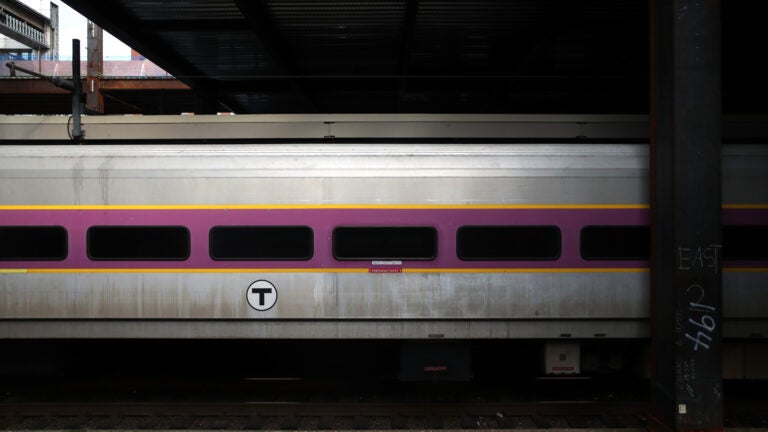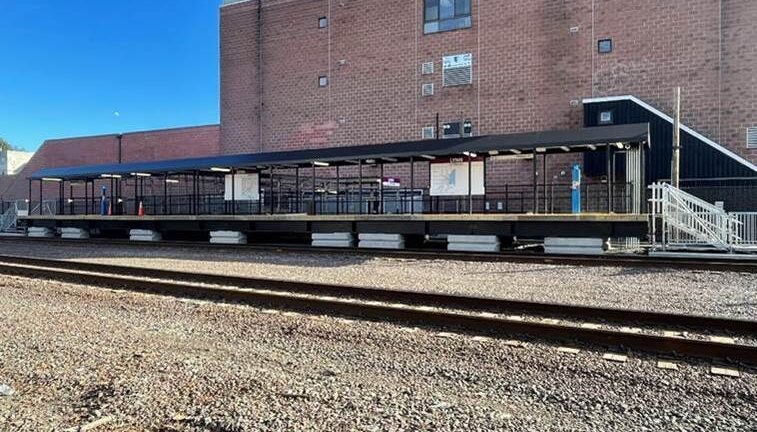Newsletter Signup
Stay up to date on all the latest news from Boston.com

It might be hard to believe, but at one point in time, the best way to get to Cape Cod and its nearly 560 miles of beaches was by train.
This was of course before the popularization of vehicles, which now clog up the roads to the vacation destination. But rail snaked all the way up the coast to Provincetown and reached down to Woods Hole beginning in the mid-1800s.
Some of that track has been ripped up or turned into a recreational area, such as the Cape Cod Rail Trail. And while replicating what once was wouldn’t be feasible — at least for now — there is renewed interest in expanding rail once again to Cape Cod.
“Traffic issues on the Cape and Islands are a huge concern,” said state Rep. Dylan Fernandes, who represents part of Cape Cod. “Anyone that lives or summers here knows that this is a place with congestion.”
It took me two hours from Harwich to get to the Sagamore Bridge as Labor Day visitors head off Cape. @capecodtimes #capetraffic #laborday #summersover #secondsummer pic.twitter.com/dTkYQ0dpW3
— Merrily Cassidy (@cctphotographer) September 4, 2023
Fernandes and Rep. Kip Diggs of Barnstable co-authored and filed a bill in late August to expand MBTA commuter rail to Cape Cod. If passed, the new commuter rail would use some of the tracks that are currently used by the CapeFLYER, MBTA’s seasonal train that gets beachgoers to and from the region on summer weekends.
And although it won’t take you all the way to Hyannis immediately, the bill wants to find out if it could be possible in the near future.
What can be done relatively quickly, Fernandes said, is extending the MBTA commuter rail to the Buzzards Bay station.
It’s the station that the CapeFLYER — a 10-year-old partnership between the MBTA and Cape Cod’s regional transit authority — stops at before crossing the Cape Cod Canal.
The Cape Cod Commission studied the possibility of implementing commuter rail on these tracks to Buzzards Bay in 2021, which is what Fernandes used to inform his bill.
“The infrastructure from Bourne heading out to Boston is in relatively good shape compared to the challenges we see on the other side of the Cape Cod Canal,” said Steven Tupper, the Cape Cod Commission deputy director. “Certainly taking a pragmatic approach and making use of the infrastructure we have on that side of the canal would be a great first step in terms of improving access onto the rail network.”
The study, published in 2021, estimated that commuter rail running to and from Buzzards Bay would see more than 1,700 daily boardings and cut a daily average of 13,628 kilograms in CO2.
The rail that runs the CapeFLYER also goes all the way to Hyannis, but there are a couple of reasons the commuter rail would not immediately be able to also extend to that last stop if the bill passes.
Tom Cahir, administrator of the Cape Cod RTA, said the Cape Cod Canal Railroad Bridge stands to be an issue.
The bridge, which runs parallel to the Sagamore and Bourne bridges, is operated by the U.S. Army Corps of Engineers, which comes with bureaucratic red tape when trying to make changes.
“You can’t just raise and lower the bridge every time a train comes into Buzzards Bay,” Cahir said. “You have to coordinate with the Army Corps of Engineers.”
The CapeFLYER has to deal with the Army Corps, but Cahir said it’s a lot easier considering the seasonal train doesn’t run as frequently. Commuter rail, however, would run daily, multiple times a day.
Cahir added that there also isn’t the ability currently to run high-speed rail past the Buzzards Bay stop. He said he’d love the idea of expanding efficient bus services to get people from the last commuter rail stop to their final destination.
The bill says that this particular piece should go into effect no more than a year after it’s passed.
What would commuter rail look like expanded past the Cape Cod Canal? The other part of this bill wants to study just that.
The legislation asks to look at rail that would connect “Falmouth, Bourne, Barnstable, Yarmouth, and Sandwich and the city of Boston via the Cape Cod line, Hyannis Branch line and the Woods Hole Branch line.”
The study would look at what it would take to fund upgrades and set rail schedules. Some of the upgrades that Fernandes said would need to be made would be updating the tracks so the train can move faster than 30 mph and fixing up signals and platforms.
But the barrier is once again the rail bridge and the Army Corps.
The bill mentions studying the costs associated with taking ownership of the Cape Cod rail bridge from the Army Corps. It also asks to determine the feasibility of replacing the current bridge, now a vertical lift bridge that opens up as boats pass through the canal, to a stationary bridge.
In its 2021 study, the Cape Cod Commission similarly looked at what service would look like if expanded past the canal.
The amount of people it would see on board and its savings on CO2 obviously increased, with more than 2,500 boardings and a cut of nearly 21,000 kilograms. But costs nearly doubled to expand service less than four miles away to Bourne. Though the study stressed these amounts could change, operations and maintenance costs were projected at $5 million to expand to Buzzards Bay, compared to $9.3 million to the Bourne station.
Tupper said the commission also looked at expanding to the Hyannis stop, the last station on the CapeFLYER, but said it came with even bigger increases in costs.
“I certainly understand the approach of starting with what you have and building from there,” said Tupper, who added that a new study post-pandemic would be important to see what demand looks like if the line were expanded now.
The bill hasn’t passed yet, and its next steps will be going to committee, Fernandes said. It was referred to the House Rules committee on Sept. 7 but has yet to be scheduled to be heard.
Today we filed legislation to bring Commuter Rail to Cape Cod. Millions of people across the state have access to commuter rail, it’s time for Cape and Islands residents to be included. https://t.co/KcaEb0yPi7… pic.twitter.com/YmaRzzaOxx
— Dylan Fernandes (@RepDylan) August 30, 2023
And it isn’t necessarily a slam dunk in terms of passage. In 2016, a similar bill that hoped to expand commuter rail service to Cape Cod failed due to cost concerns. This bill came even after a vote in 2015 from Bourne residents, who joined the MBTA service area and have paid the transit agency an annual fee ever since.
But other expansions of MBTA services are in the works, including commuter rail to New Bedford, which will provide a train service to and from New Bedford and Boston for the first time since 1958 — around the same time train services that connected Boston to Cape Cod came to a halt.
It’s Fernades’s hope that the current South Coast Rail can serve as a push to get commuter rail rolling on the Cape, with the Middleborough station serving as a link from Buzzards Bay to South Station.
“Essentially the track is already paved,” Fernandes said. “It’s already upgraded for commuter rail speeds. What we need now is the political push to make commuter rail from Buzzards Bay to South Station available for the nearly 300,000 residents who call the Cape and Islands their home.”
Stay up to date on all the latest news from Boston.com

Stay up to date with everything Boston. Receive the latest news and breaking updates, straight from our newsroom to your inbox.
Conversation
This discussion has ended. Please join elsewhere on Boston.com